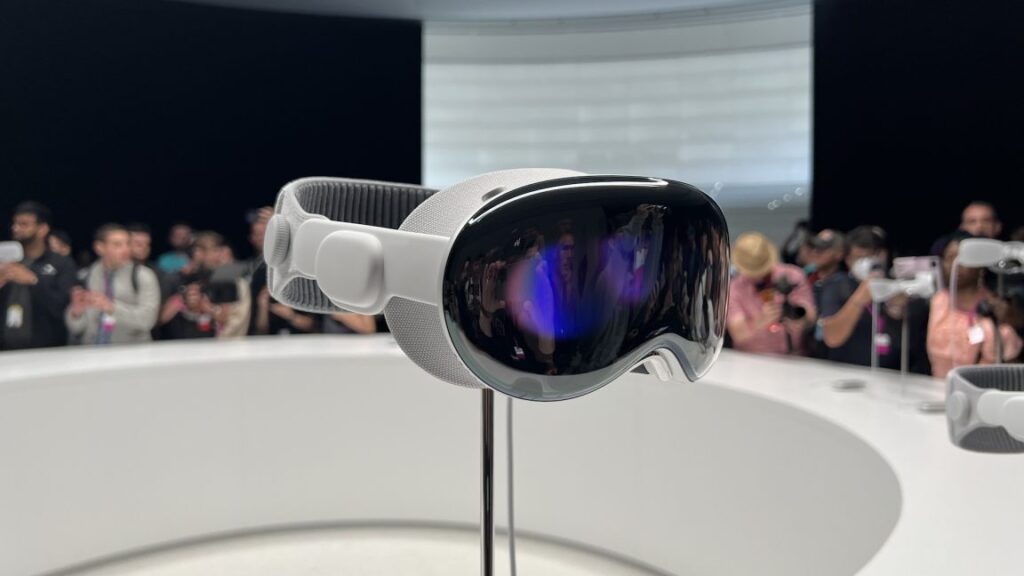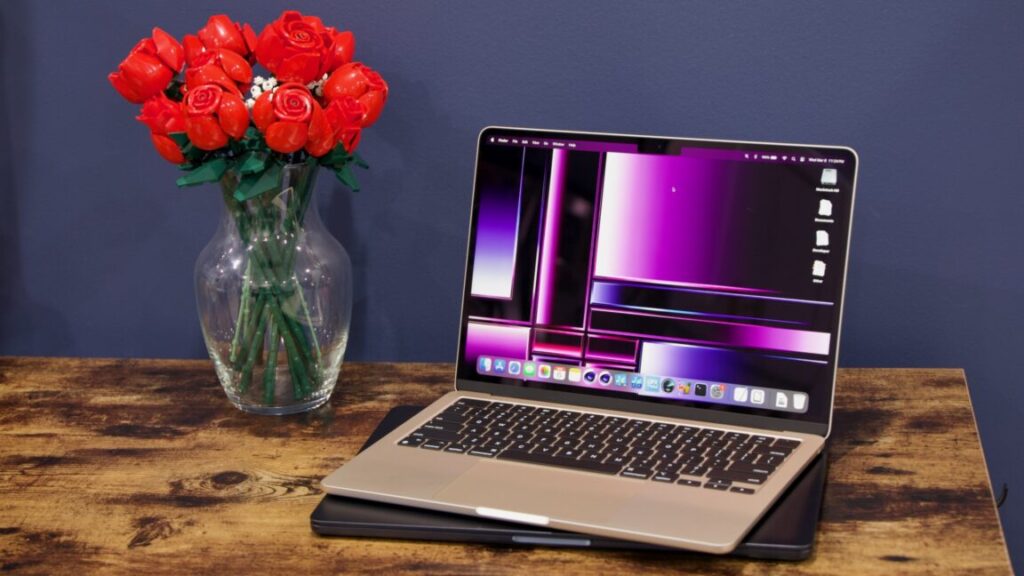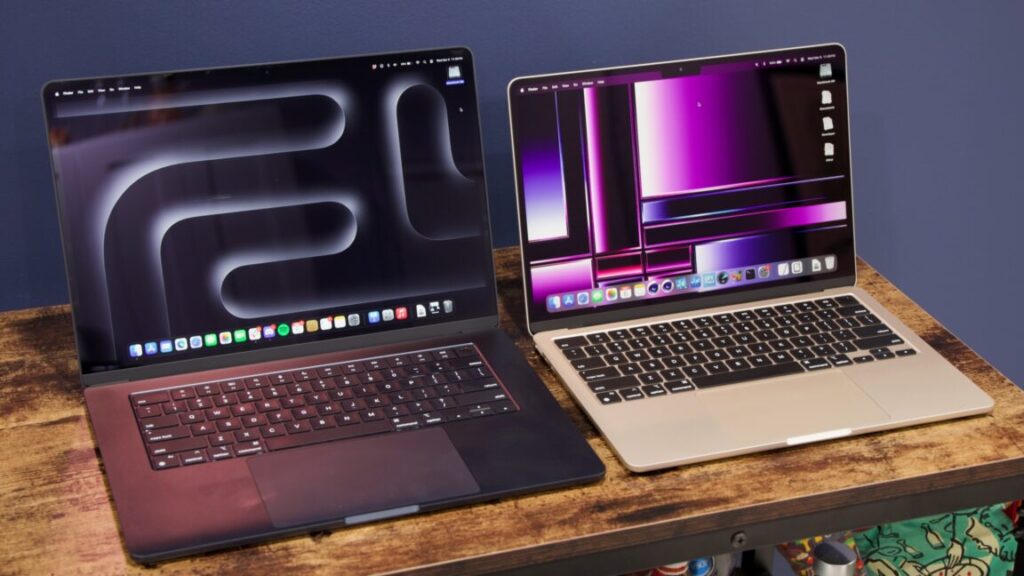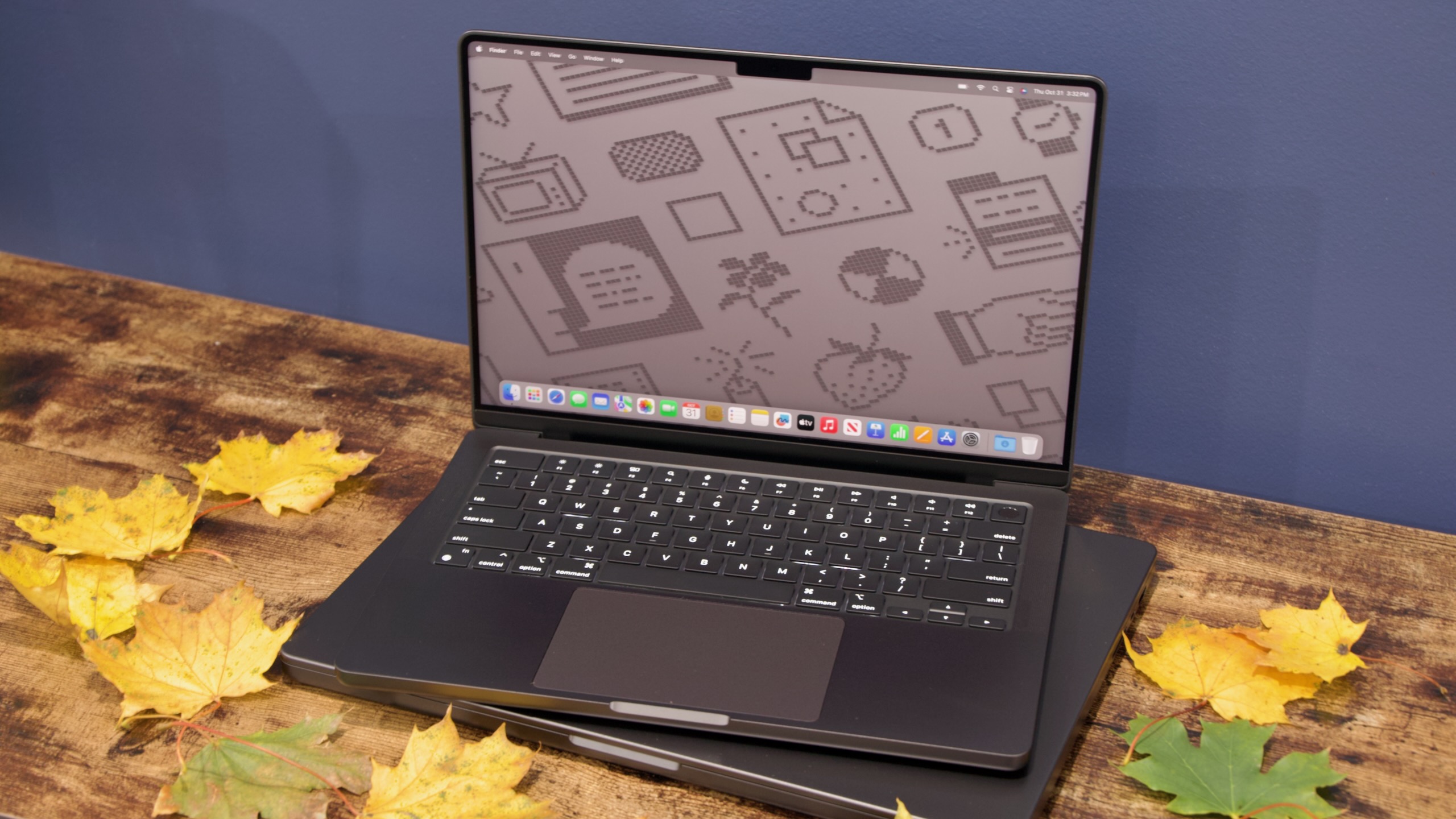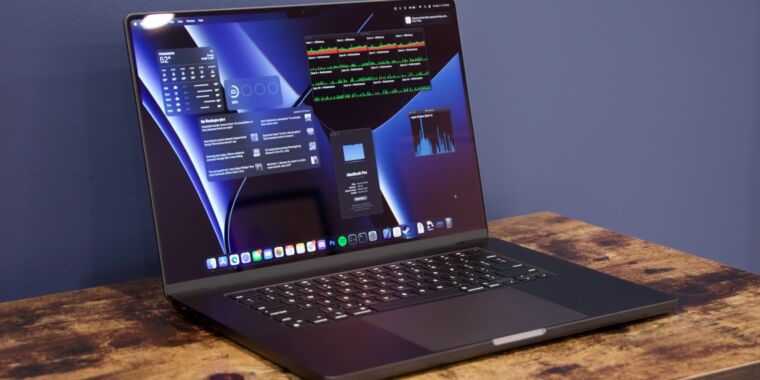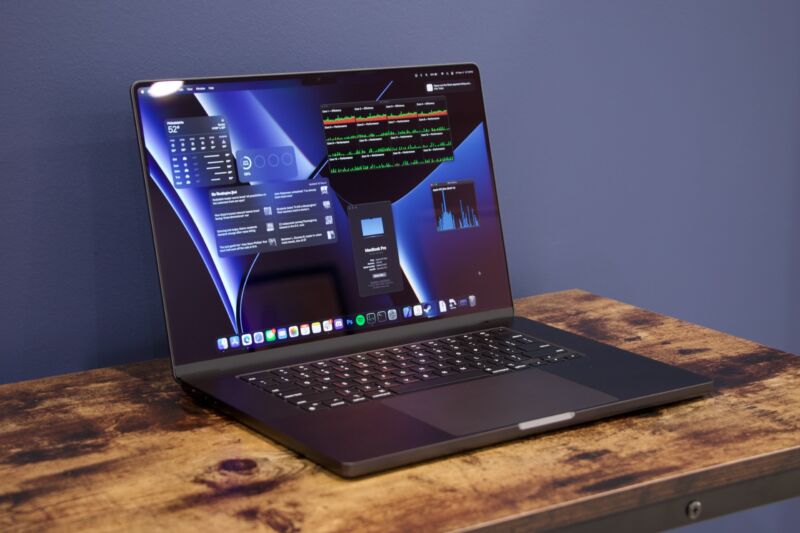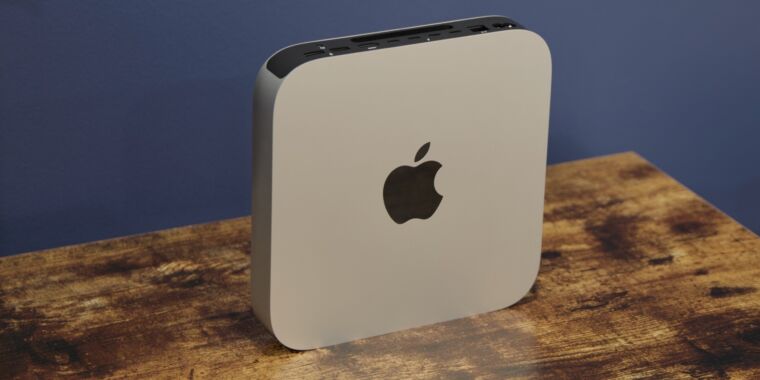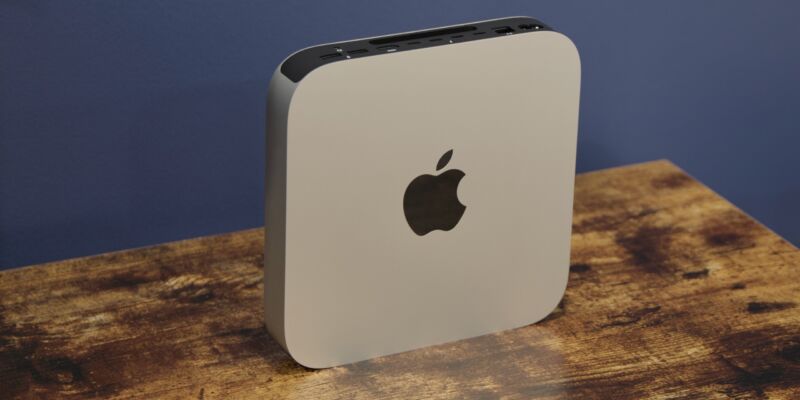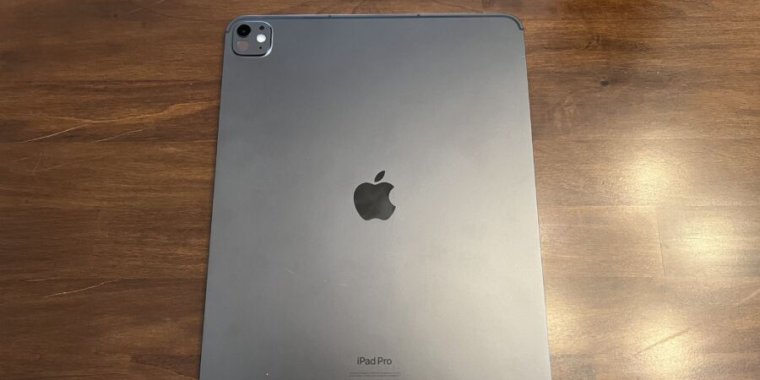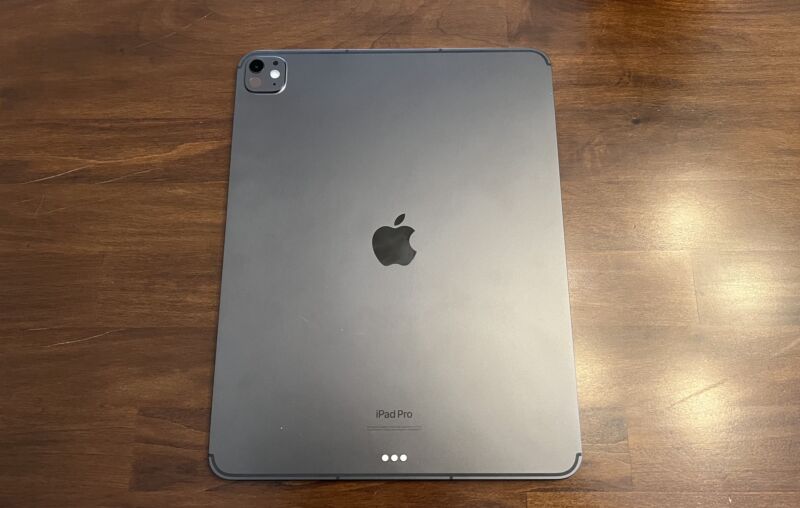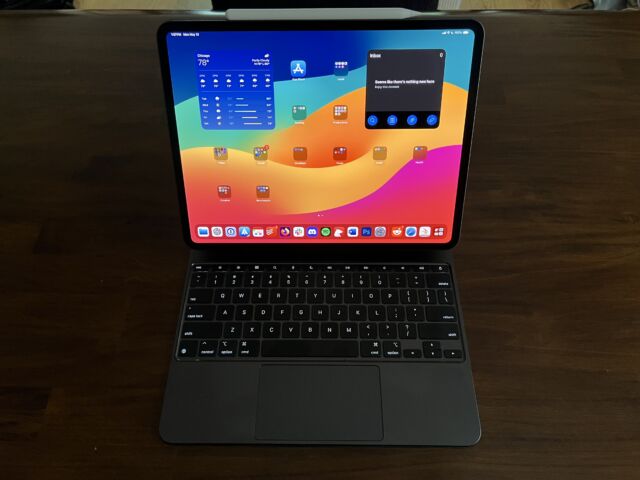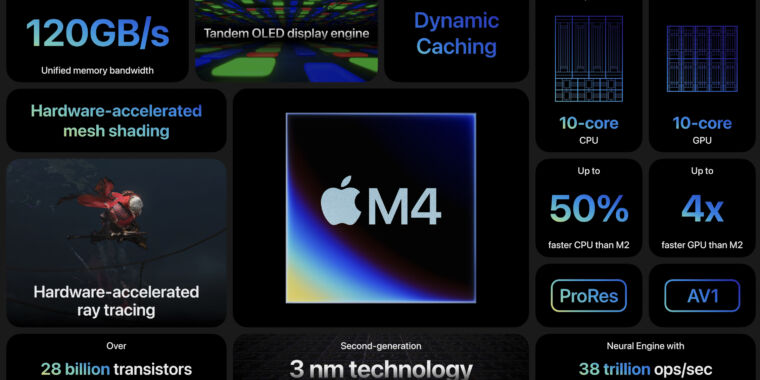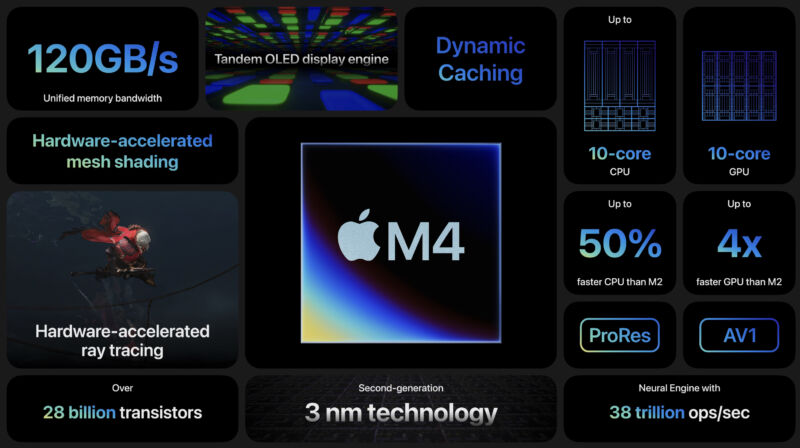Report: Apple M4, more comfortable strap will headline first major Vision Pro update
Apple hasn’t iterated on its Vision Pro hardware since launching it in early 2024 for $3,499, opting instead to refine the headset with a steady stream of software updates. But Bloomberg’s Mark Gurman reports that a new version of the Vision Pro could arrive “as early as this year,” with a replacement for the 3-year-old Apple M2 chip and a more comfortable strap.
Gurman says that the updated Vision Pro would ship with Apple’s M4 processor, which launched in the iPad Pro last year and has since found its way into new MacBook Pros, MacBook Airs, a new iMac, and a redesigned Mac mini.
Our tests in Apple’s other devices (and publicly available benchmark databases like Geekbench’s) show the M4 offering roughly 50 percent better multicore CPU performance and 20 or 25 percent better graphics performance than the M2—respectable increases for a device like the Vision Pro that needs to draw high-resolution images with as little latency as possible. Improvements to the chip’s video encoding and decoding hardware and image signal processor should also provide small-but-noticeable improvements to the headset’s passthrough video feed.
The report also claims that Apple is working on redesigned headbands for the new Vision Pro to “reduce neck strain and head pain” and make the headset more comfortable to wear for longer periods of time. This update reportedly won’t be making major changes to the design of the device itself, so it would probably still come close to the 1.3–1.4-pound weight of the current M2-powered Vision Pro.
The report doesn’t mention any pricing plans one way or the other. But it’s worth noting that Apple has functionally reduced prices on M4-equipped Macs over the last year and a half, most notably by bumping the minimum amount of RAM from 8GB to 16GB—a cut of a few hundred dollars wouldn’t suddenly change the Vision Pro into a mass-market product, but it would be a step in the right direction.
Report: Apple M4, more comfortable strap will headline first major Vision Pro update Read More »
